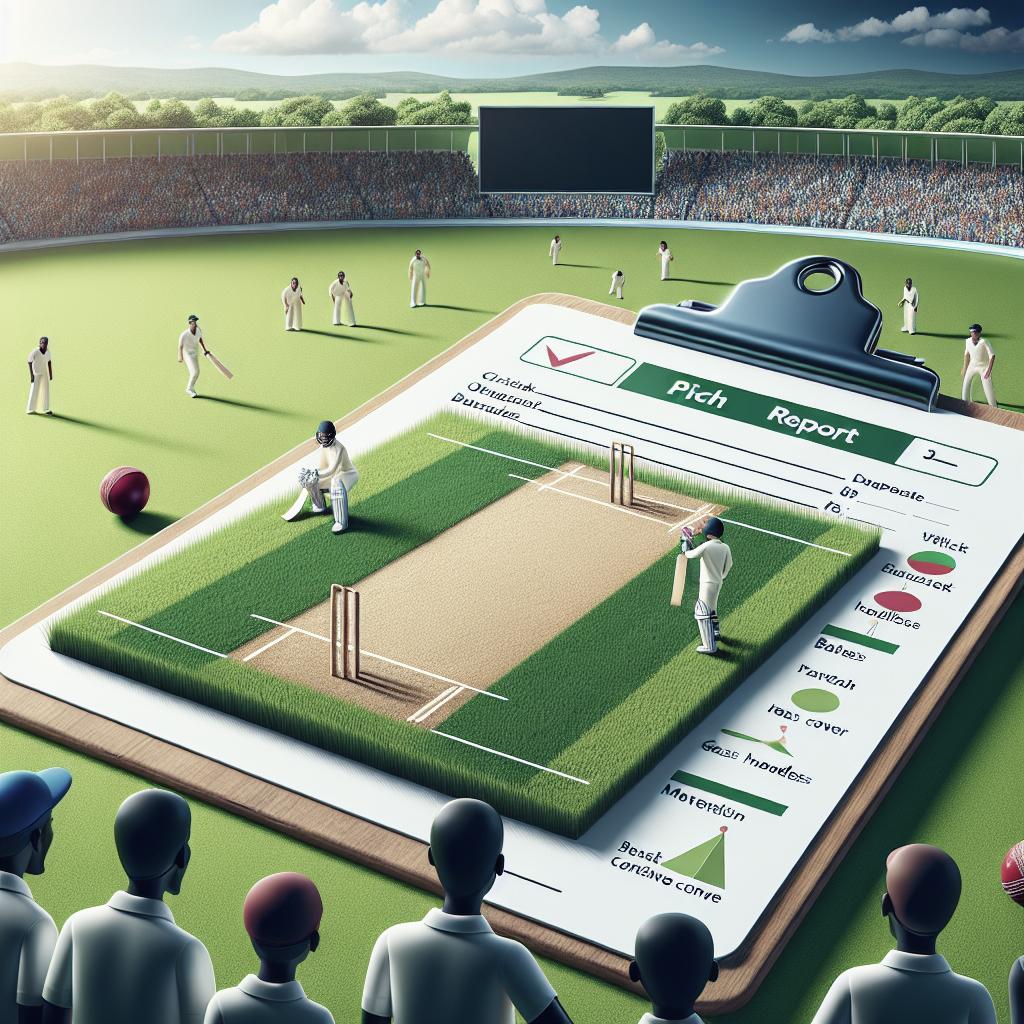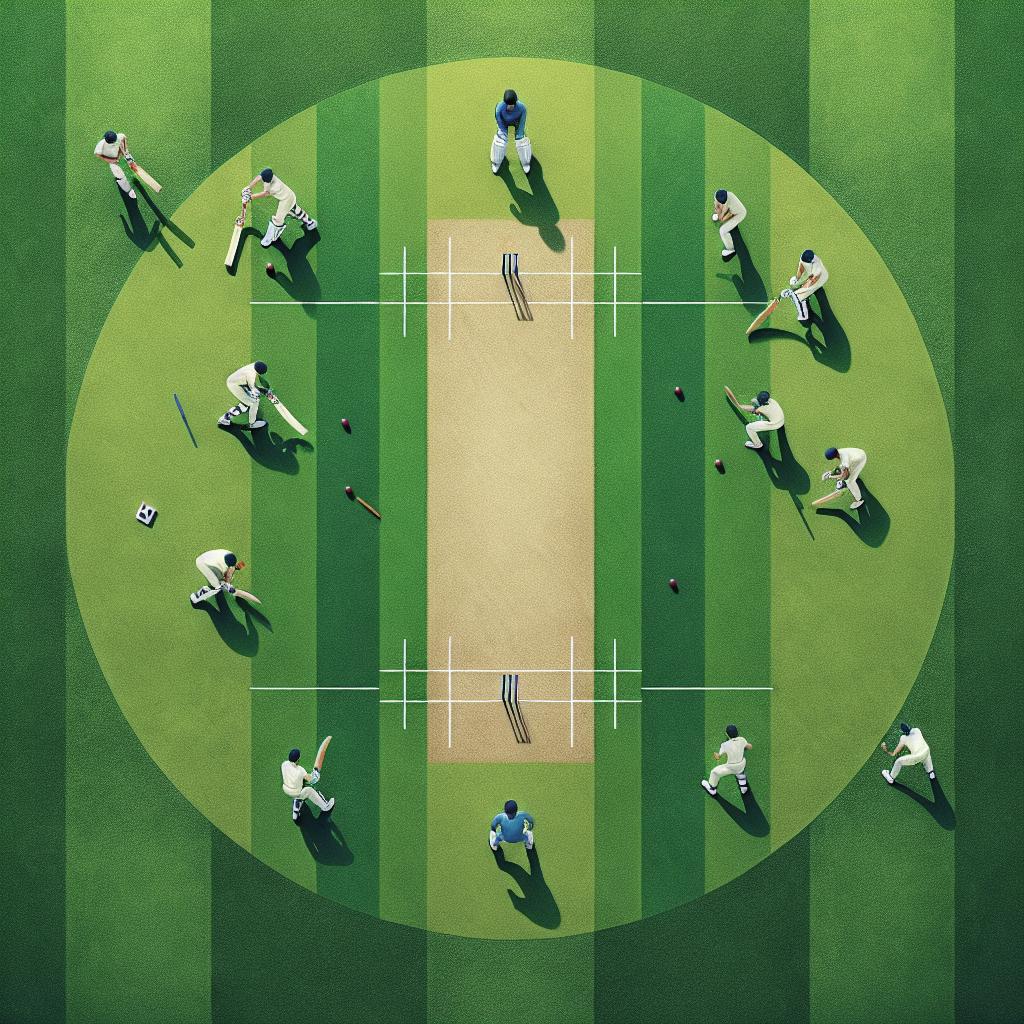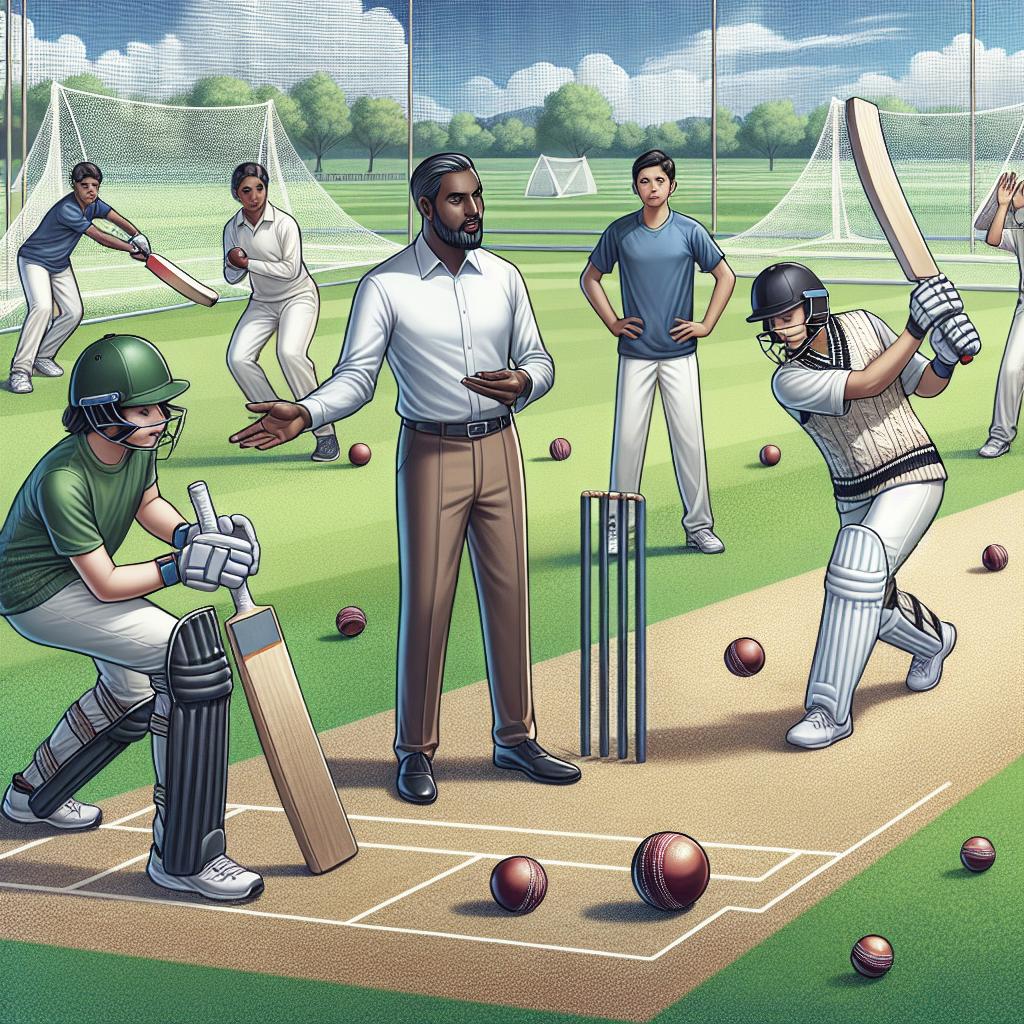<>
Cricket is a sport deeply influenced by the pitch it’s played on. Understanding the elements of a cricket pitch report can enhance a fan’s appreciation of the game, as well as provide athletes, coaches, and analysts with critical information. This blog post delves into the intricate details of cricket pitch size, how pitches are constructed, various types of pitches, global pitch conditions, and the significant impact these factors have on the game. Whether you’re a seasoned cricket fan or a newcomer looking to understand the nuances of the game, this comprehensive guide will equip you with the knowledge to interpret pitch reports accurately.
Cricket Pitch Size and Measurement: Length in Feet and Meters, Wicket Length, Boundary Size:
### Cricket Pitch Size and Length in Meters: A standard cricket pitch measures 22 yards or 20.12 meters in length. This standardized dimension ensures uniformity across all levels of the game, from local to international matches. The width of the pitch is typically marked at 3.05 meters. These dimensions are crucial for maintaining consistency in play, allowing players to develop their skills on a uniform playing surface. The 20.12-meter length is strategically significant. It strikes a balance that allows bowlers to generate speed and spin, while providing batsmen with sufficient reaction time. The precise measurement is critical; even slight variations can alter the dynamics of the game. ### Cricket Pitch Size and Length in Feet: Converted to feet, the cricket pitch measures 66 feet in length and 10 feet in width. These measurements are steeped in tradition, dating back to the early origins of the game. The 66-foot length has been preserved through centuries of evolution in cricket, maintaining the sport’s traditional aspects while accommodating modern advancements. Understanding the measurements in both feet and meters provides a more rounded perspective on the universal language of cricket. For those more familiar with feet, this conversion makes the details of the pitch more relatable and accessible. ### Cricket Wicket and Crease Length: At the heart of the cricket pitch lie the wickets and creases. The distance between the wickets is exactly 22 yards (20.12 meters/66 feet). This precise measurement ensures fair and consistent play. The popping crease, where the batsman stands, is marked 1.22 meters (4 feet) in front of each wicket. The bowling crease aligns directly with the wickets, while the return crease extends perpendicular to the popping crease. The positioning of the creases allows for clear demarcation of legal play areas for both batsmen and bowlers. It’s imperative for maintaining the balance of the game and for umpires to make accurate decisions. ### Cricket Boundary Length: Cricket grounds vary in size, but the boundary length—marked from the center of the pitch—typically ranges between 55 to 90 meters (180 to 300 feet). While no standardized boundary size is enforced, the International Cricket Council (ICC) mandates a minimum and maximum range to ensure fairness. Shorter boundaries often favor batsmen, encouraging more aggressive play, while longer boundaries test a batsman’s power and fielding team’s agility. The variation in boundary lengths adds to the unique character of each cricket ground, influencing strategies and styles of play. Teams often adapt their tactics based on the specific dimensions of the ground they are playing on.
How is a Cricket pitch made?
Creating a cricket pitch is an art that involves meticulous preparation. It begins with selecting the right soil type—typically a mixture rich in clay content to provide bounce and durability. The soil is then leveled to ensure a flat surface. Additionally, the pitch undergoes a process called “rolling,” where heavy rollers compact the soil to create a hard and smooth surface. Moisture content is another critical factor. Groundskeepers carefully manage water levels to achieve the desired pitch conditions. Too much water can make the pitch slow and affect bounce, while too little can cause it to deteriorate quickly. This balance is achieved through controlled watering and covers to protect from inclement weather. Grass maintenance is equally important. The type and length of grass can significantly affect how the ball behaves. Longer grass can slow down the ball, while shorter grass allows for more speed and spin. Groundskeepers use specialized equipment to mow the grass to the preferred length, ensuring optimal playing conditions.
The types of pitches:
### Green Cricket Pitch: A green pitch, characterized by lush grass covering, often benefits seam bowlers. The grass provides extra movement off the surface, making it challenging for batsmen. Such pitches are commonly found in countries with cooler climates, like England. The additional movement can lead to exciting contests between bat and ball. ### Flat Track Pitches: Flat track pitches are known for their even bounce and lack of grass cover, making them batsmen-friendly. These pitches offer little assistance to bowlers, leading to high-scoring games. They are often seen in subcontinental regions like India and Sri Lanka, where dry conditions help maintain a flat surface. ### Dry Cricket Pitch: Dry pitches are characterized by a lack of moisture. These conditions make the pitch break down quickly, aiding spin bowlers as the game progresses. The cracks in the pitch make it unpredictable, offering plenty of turn and bounce. Such pitches are largely found in arid regions. ### Wet Pitch: Wet pitches occur due to excessive rainfall or poor drainage. They are often challenging for both batsmen and bowlers. The ball can skid off the surface or behave unpredictably. Groundskeepers go to great lengths to prevent wet conditions, using covers and advanced drainage systems. ### Dusty Pitch: Dusty pitches are common in regions with hot and dry climates. These pitches provide assistance to spin bowlers from the beginning of the game. The loose surface allows for significant turn, posing a challenge for batsmen. Dusty pitches are frequently seen in the Indian subcontinent. ### Dead Pitch: Dead pitches have minimal grass and are often dry but hard. These pitches offer little assistance to bowlers, resulting in high-scoring matches. Dead pitches are designed to last for extended periods, making them suitable for long formats of the game like Test matches. ### Hybrid Cricket Pitches: Hybrid pitches combine natural grass with artificial elements to provide consistent playing conditions. These pitches require less maintenance and are more durable. They offer a good balance between bat and ball, making them ideal for venues with heavy usage. Hybrid pitches are gaining popularity for their efficiency and reliability.
Pitch Conditions around the world:
Pitch conditions vary significantly across the globe, influenced by local climate, soil type, and maintenance practices. In England, pitches are typically green and moist, favoring seam and swing bowlers. Conversely, in Australia, pitches are known for their bounciness and pace, providing an exciting contest for batsmen and fast bowlers alike. In the subcontinent, pitches often start flat but break down to aid spinners, leading to high-scoring games that become spin-dominated towards the latter stages. The West Indies offer another unique challenge with their traditionally slow and low pitches, demanding a different skill set from players. These variations make cricket a uniquely challenging sport, requiring players to adapt their strategies to the conditions they face. It adds a layer of complexity and excitement, making each game a unique experience.
Impact of pitches:
Pitches have a profound impact on the outcome of a cricket match. A green pitch can turn the tide in favor of bowlers, making it difficult for batsmen to score. On the other hand, a flat pitch can lead to run fests, testing the endurance of bowlers. Understanding these impacts helps teams plan their strategies more effectively. Players often tailor their techniques to exploit or mitigate the pitch conditions they face. Bowlers modify their lengths and speeds, while batsmen adjust their stroke play and footwork. The psychological aspect is equally significant; knowing a pitch’s behavior can boost confidence or cause trepidation. Lastly, pitches impact the overall entertainment value of the game. A balanced pitch offers a fair contest between bat and ball, providing spectators with a thrilling experience. Grounds with consistently good pitches often become iconic cricket venues, celebrated by fans and players alike. ### Leave a comment What are your thoughts on the importance of cricket pitches? Have you ever noticed how different pitches affect the nature of the game? Leave a comment below to share your experiences and insights!
| Element | Details |
|---|---|
| Cricket Pitch Size and Length (Meters) | 20.12 meters (Length), 3.05 meters (Width) |
| Cricket Pitch Size and Length (Feet) | 66 feet (Length), 10 feet (Width) |
| Cricket Wicket and Crease Length | 22 yards between wickets, 1.22 meters popping crease, aligned bowling crease |
| Cricket Boundary Length | 55 to 90 meters |
| Green Cricket Pitch | Lush grass, favors seam bowlers |
| Flat Track Pitches | Even bounce, batsman-friendly |
| Dry Cricket Pitch | Lacks moisture, aids spin bowlers |
| Wet Pitch | Excessive moisture, unpredictable behavior |
| Dusty Pitch | Loose surface, helps spin bowlers |
| Dead Pitch | Minimal grass, high-scoring |
| Hybrid Cricket Pitches | Natural grass and artificial elements |
| Pitch Conditions Around the World | Varies significantly, affects playing style |
| Impact on the Game | Influence on player strategies and game results |


